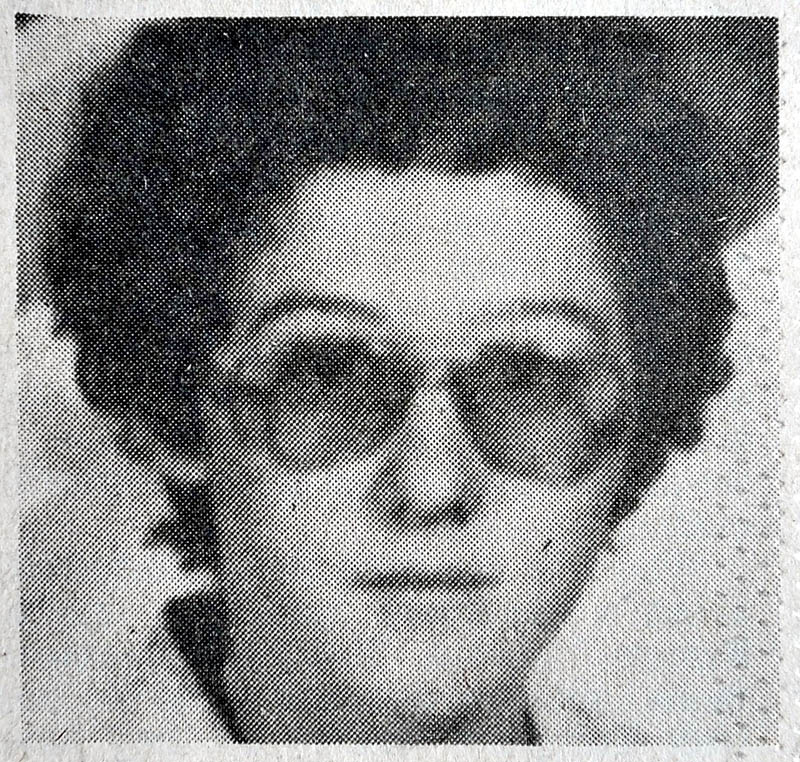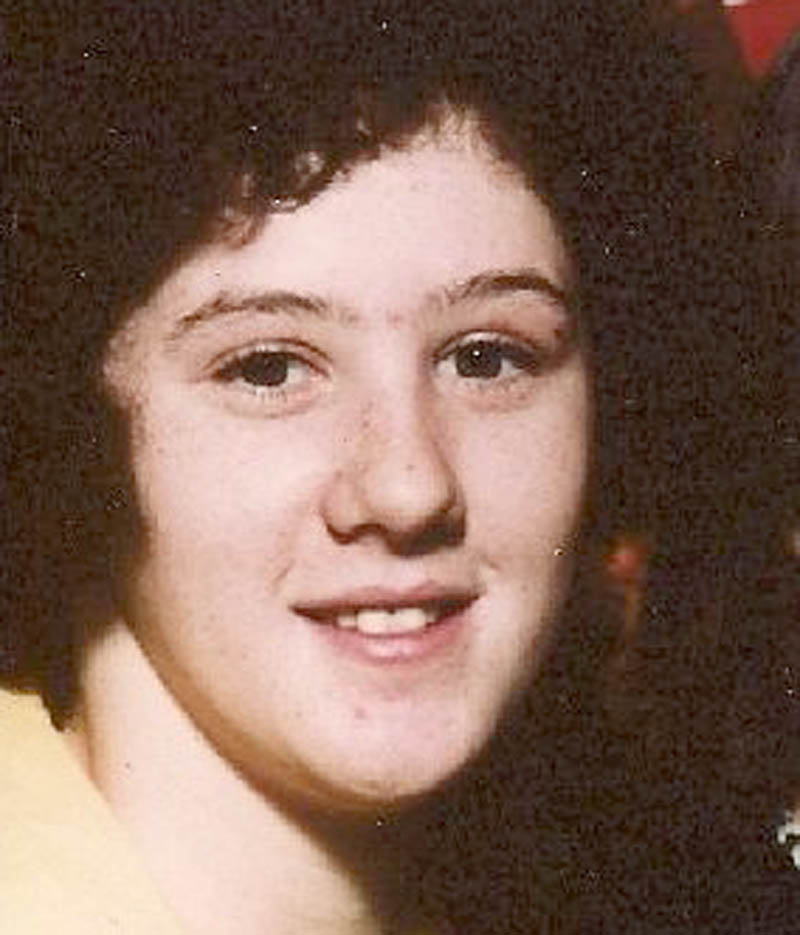This story originally appeared on Jan. 3, 2005, in the Morning Sentinel.
Twice a year for the past quarter-century, Christine Belangia endures powerful memories of her sister Rita — once around Christmastime when the family would share the holidays, and the other around the Fourth of July, when Rita Jean St. Peter was found murdered in rural North Anson.
Twenty-five years later, Belangia, 52, now of Weld in Franklin County, says she has never seen the police report on her sister’s death. She has not seen the autopsy report, nor was she ever told the cause of death or if the crime involved a sexual assault.
Even the death certificate on file at the Anson Town Office did not reveal the cause of death.
Mostly, she said, she is haunted by the fact that police never were able to make an arrest in the case she calls an unsolved murder.
“It’s just a cold case, they say it’s never going to be a shut book,” Belangia said. “They have no leads. She’s in a grave and this person is somewhere out there, living. I feel cheated.
“I lost a sister, a best friend, somebody I loved very much and that hurts. Christmastime brings back a lot of memories.”
The battered body of Rita St. Peter, 20, was found on the morning of July 5, 1980, by a resident of Campground Road in North Anson. She had been beaten, her skull was fractured and police said she may have been run over by a truck or a car.
The field where the body was found was just a mile from the home where Christine Belangia, then Christine Pinkham, lived with her husband Samuel and the couple’s two children. The field also was just a half-mile from a home Rita and her sister had lived a few years earlier with their parents and other siblings.
According to police at the time, Rita St. Peter was last seen leaving the newly opened Main Street Depot tavern in Madison about 12:30 a.m. July 5. She reportedly had been to a July 4 party in nearby Embden and wound up at the bar for a final drink before heading home to Main Street, Anson, where she lived with her parents and young daughter.
Eyewitnesses told police they had seen Rita, who had left the bar alone, get into a pickup truck on the Madison-Anson bridge.
State police detectives investigated the death, interviewing more than 200 people, but came up empty. The Attorney General’s office even issued a plea for information from anyone who might have seen the young woman in the last hours of her life.
Twenty-five years later, there still is no news, Belangia said.
“I would like to know why,” she said. “Why? Why? is the question. How could anybody murder somebody in cold blood?”
Lt. Timothy Doyle, commanding officer of Criminal Investigation Division II at state police headquarters in Augusta said the facts of the case remain the same and the investigation remains an open case. He said the police report and cause of death have not been released just for that reason — the case may be cold, but it’s not closed.
“Every one of the detectives are assigned cold cases,” he said. “Typically in an unsolved homicide, investigators have to keep certain facts to themselves, to keep it so the public doesn’t know the details. Every homicide case is left open until it’s solved.”
Doyle said there are 70 such cold cases in Maine currently, but police have had a good track record in using new technology such as DNA testing to solve old cases. He said giving cases a new face with a new detective often turns up clues that may have been overlooked or ignored the first time around.
Doyle pointed to the case against Albert P. Cochran who was convicted in 1999 for the 1976 murder of Janet Baxter of Oakland. Investigators used DNA to link Cochran to the victim.
That case had remained cold, but still open for 23 years.
He said two other cases from the 1970s also have been brought to a resolution in recent years thanks to new investigative tools.
“We can point to some successes we’ve had with unsolved cases by continuing to have them assigned to a detective and continuing to work on them as time allows,” Doyle said.
Detective Robin Parker is assigned to the St. Peter case.
Christine Belangia said she had some hunches and some suspects of her own in the weeks and months following the death of her sister. There were suspects, she said, but never an arrestst.
Among the hunches was a report of a local man seen washing his truck between 2 a.m. and 4 a.m. July 5, 1980. His truck matched the description of the one seen picking up Rita St. Peter.
Charles Belangia, Christine’s husband, said he has contacted the office of state medical examiner, requesting to see the autopsy report on his wife’s sister. He said he hopes to hear something in the coming weeks.
Until then, the Belangias said they have lived through another Christmas holiday season and hope that, come the Fourth of July, they can get some closure on the case.
“Every time the Fourth of July comes up I get real down,” Christine Belangia said. “When I see the fireworks it brings a tear to my eye and my heart breaks to think somebody had murdered her.”
Doug Harlow — 861-9244
dharlow@centralmaine.com
Copy the Story Link
Send questions/comments to the editors.





Success. Please wait for the page to reload. If the page does not reload within 5 seconds, please refresh the page.
Enter your email and password to access comments.
Hi, to comment on stories you must . This profile is in addition to your subscription and website login.
Already have a commenting profile? .
Invalid username/password.
Please check your email to confirm and complete your registration.
Only subscribers are eligible to post comments. Please subscribe or login first for digital access. Here’s why.
Use the form below to reset your password. When you've submitted your account email, we will send an email with a reset code.